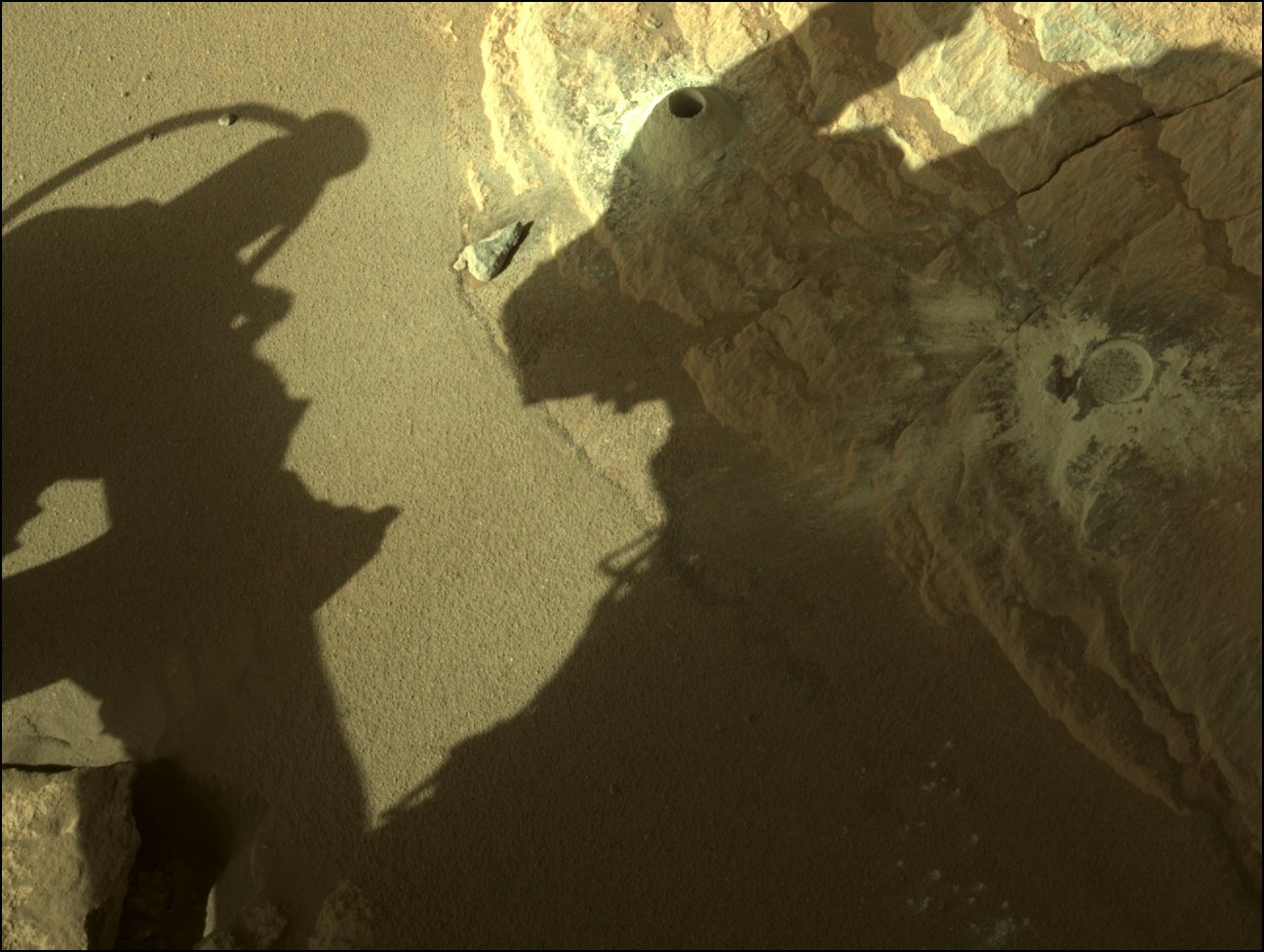NASA's Perseverance rover on Mars just collected its 3rd sample of the Red Planet (photos)

NASA's Perseverance rover has socked away another Martian sample to send home to Earth.
The car-sized Perseverance rover drilled a core sample on Monday (Nov. 15), filling a titanium tube with Red Planet rock for the third time ever.
"Another little piece of Mars to carry with me. My latest sample is from a rock loaded with the greenish mineral olivine, and there are several ideas among my science team about how it got there. Hypotheses are flying! Science rules," Perseverance team members wrote via the rover's official Twitter account on Tuesday (Nov. 16), where the team posted a few photos from the sampling operation.
Related: Where to find the latest Mars photos from NASA's Perseverance rover
Olivine is a magnesium iron silicate that constitutes most of Earth's upper mantle. Tuesday's tweet didn't provide details about the flying olivine hypotheses, but the Perseverance team will probably clue us in over the coming days and weeks.
Perseverance landed this February on the floor of the 28-mile-wide (45 kilometers) Jezero Crater, which harbored a lake and river delta in the ancient past. The rover's main jobs are to hunt for signs of past Mars life and collect dozens of samples, which will be returned to Earth by a joint NASA-European Space Agency campaign, perhaps as early as 2031.
The six-wheeled robot collected its first two samples in early September, both of them from a Red Planet rock the mission team dubbed "Rochette." (The twin successes at Rochette came after a try in early August that failed because the target rock was surprisingly crumbly.) Perseverance has roved several hundred meters since then and is now exploring a rugged, dune-filled patch of Jezero known as Séítah (which means "amongst the sand" in the Navajo language).
Breaking space news, the latest updates on rocket launches, skywatching events and more!
Séítah sports a diversity of many-layered rocks, which intrigued the science team enough to grab a sample there.
"Each layer records information about the environmental conditions present when the rock formed, and changes in layer thicknesses or textural expressions indicates an environmental change," Perseverance student collaborator Erin Gibbons, of McGill University in Canada, wrote in a blog post on Nov. 12.
"Further, by studying the directions that the layers tilted, we determined that the rocks of Séítah are likely the most ancient rocks exposed in all of Jezero Crater," Gibbons wrote. "Séítah therefore represents the beginning of the accessible geologic record and offers a once-in-a-mission opportunity to explore the full breadth of landscape evolution."
Perseverance has gotten some help recently from a little robotic buddy — the Mars helicopter Ingenuity, which landed with the rover back in February. Ingenuity initially embarked on a technology-demonstrating mission but has performed so well that it's now conducting scouting work for Perseverance, which is particularly helpful in rugged regions such as Séítah.
Mike Wall is the author of "Out There" (Grand Central Publishing, 2018; illustrated by Karl Tate), a book about the search for alien life. Follow him on Twitter @michaeldwall. Follow us on Twitter @Spacedotcom or on Facebook.

Michael Wall is a Senior Space Writer with Space.com and joined the team in 2010. He primarily covers exoplanets, spaceflight and military space, but has been known to dabble in the space art beat. His book about the search for alien life, "Out There," was published on Nov. 13, 2018. Before becoming a science writer, Michael worked as a herpetologist and wildlife biologist. He has a Ph.D. in evolutionary biology from the University of Sydney, Australia, a bachelor's degree from the University of Arizona, and a graduate certificate in science writing from the University of California, Santa Cruz. To find out what his latest project is, you can follow Michael on Twitter.

